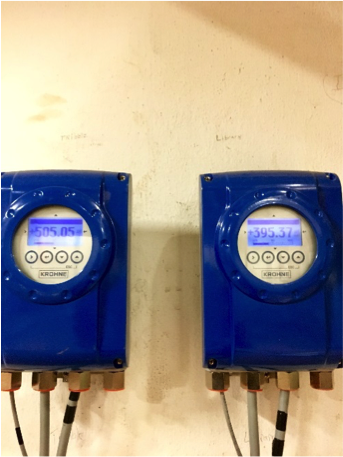Students often attribute the rise in tuition to the renovations of the Quad residence halls, but what they do not realize are the strides Wake Forest is taking to reduce energy use and become a more sustainable campus.
The most recent completed renovation took place in Kitchin Hall, and as a result of improvements is more efficient in terms of overall energy consumption.
“Kitchin feels fresh, secure, put together, just nothing seems wrong with it,” said sophomore Mike Yurgelun, a current resident there. “I have no complaints.”
“We’re looking for anomalies,” said Doug Ecklund the Building Systems Manager at WFU. “There’s always an opportunity to do something better.”
While students enjoy living in this newly renovated residence hall, they do not realize the long lasting implications these improvements can have on the environment. Some students may take a class or two on sustainability, but many are not exposed to the reality of climate change.
According to the Public Library of Science, more than 70% of primary energy used in education buildings in the U.S. is used for heating, ventilation, air conditioning (HVAC), and water heating. If universities nationwide took steps to reduce their carbon footprint, we could be a part of the effort to slow the warming of our planet.
“Students are constantly wanting to move into the newest residence hall just because it has new facilities and they don’t care about the energy conservation,” said senior Sarah Landis. “Things that directly affect people are what students are going to notice more.”
“Maybe if Wake had some sort of requirement to take a class on sustainability, students would become more aware of how their actions directly affect the environment,” said senior Daria Ruiz.
According to World Wide Energy, lately many college campuses are changing over to LED lighting because it not only cuts utility costs, but also provides brighter lighting increasing the safety of students walking during nighttime hours.
“The interior lighting is LED, which uses very little electricity, has a one year payback period, and has a 10+ year life meaning we’re throwing away less light bulbs,” said Ecklund in regards to energy consumption in Kitchin.
There is occupancy sensing for these lights, which is important because students tend to leave their lights on when leaving their rooms not recognizing the impact this may have long-term.
“I lived in Poteat pre-renovation, Kitchin’s twin building, and remember a lot of people going to bed with their hall lights on,” said Ruiz.
“Before and after the renovation during occupied periods, Kitchin is showing a 19% reduction in energy use that can be attributed to the enhancements in the building,” said Ecklund. “Our goal is to analyze the buildings closely and focus on the worst ones.”
According to Ecklund, other improvements made to reduce energy consumption are the installation of variable speed fans on the room heating and cooling units, the installation of reduced flow showers and fixtures and the ability of facilities to adjust room temperatures remotely during breaks.
Landis described her experience living in Kitchin pre-renovation as the air being damp so residents would request individual dehumidifiers, and remembers her suitemate having an insect problem.
“The air quality was improved with the installation of basement dehumidifiers and the re-insulation of attic spaces, building piping, and ductwork,” said Ecklund in regards to the renovation. “The university does a lot to prevent mold growth.”
Ecklund explained the Direct Digital Controls (DDC) that is connected to central campus and how it helps facilities monitor and control the efficiency of each building. In each mechanical room there are steam, water, and electric meters.
“The retrocommissioning of building systems on campus is coming soon, an initiative to bring back design specifications and to operate as originally intended,” said Ecklund about the future of this campus and sustainability.
Although the sustainable efforts are not being recognized as much in residence halls as in food locations such as the Pit, it is a matter of time and spreading awareness for more students to under the implications and take action.
“I’m glad these renovations can encourage students to act in a way that reduces our energy usage and therefore helps the environment,” said Yurgelun.













